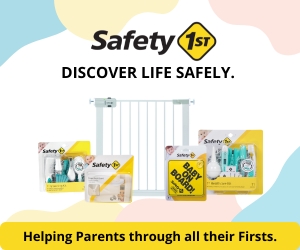For some new moms, the thought of struggling into something lycra on very little sleep, with leaking breasts, to take part in some form of exercise might fill you with horror. Fair enough! But there are those of you who feel trapped by the fact that you can’t take part in sports and activities that you used to now that you have a […]
Emotional Health during pregnancy
Emotional Health during pregnancy
Expecting a child is a blessing and an incredible experience, whether it’s your first child or not. Often, focus is mainly placed on the joy that comes with expecting, the long nights ahead or how it will change life as you know it. But we usually don’t emphasise on emotional health during pregnancy when in […]
Tips for Mums & Dads When Transitioning from 1 Child to 2
Tips for Mums & Dads When Transitioning from 1 Child to 2
Giving birth to your firstborn child sees you worrying about how and what to do right as you find your feet and transition into first-time parent mode. Welcoming your second child into your new family, you will be backed by prior experience to support you in your new role as family ‘multi-tasker’ as you embrace […]
You’re Pregnant! Now what? What to expect when you are expecting and knowing your rights as a new Mom
You’re Pregnant! Now what? What to expect when you are expecting and knowing your rights as a new Mom
Every second four babies are born somewhere in the world. Most births are usually preceded by the most popular question: Is it a boy or a girl? In South Africa, 1 million births took place in 2021 with the most popular choice of birth names being Lethabo and Melokuhle according to Statistics South Africa, both […]
Top Tips for new moms getting the nutrients they need when breastfeeding
Top Tips for new moms getting the nutrients they need when breastfeeding
When your baby relies on you and your precious breast milk to provide the essential nutrients they need to help them grow and give them the best start in life, it is crucial you are eating healthily. Finding the time and the energy to eat properly when you have a new baby to care for can be challenging, so here are a few helpful tips:
Love Every Moment: Pregnancy Myths Unraveled
Love Every Moment: Pregnancy Myths Unraveled
Pregnancy is the most natural thing in the world and possibly the most miraculous. It is also different for every Mother-to-be. If you are thinking of starting a family, are already pregnant or are considering doing it all over again, it is important to keep abreast of the latest information and arm yourself with knowledge […]
Back-to-Work after Baby Maternity Made Easy for New Moms
Back-to-Work after Baby Maternity Made Easy for New Moms
As a new Mom, following the birth of your baby, your previous life as a single person can seem far removed from your new roles and responsibilities of parenthood. Pre- and post maternity leave is the bridge that supports you in learning how to manage both roles as you prepare to return Back-to-Work. Now […]
Philips Avent support and empower parents to feed their babies anytime, anywhere
Philips Avent support and empower parents to feed their babies anytime, anywhere
Two thirds of moms would be more confident and comfortable breastfeeding in public if it was considered ‘normal’* Let’s support and empower parents to feed their baby anytime, anywhere. Breastfeeding has been around for as long as we have existed. We are also more aware than ever of the health benefits of it for baby […]
Breastfeeding on the go
Breastfeeding on the go
Breastfeeding when you’re out is convenient, hygienic and the most natural and healthy way for your baby to feed – so be proud of what you’re doing! It allows you to easily and discreetly feed your baby when you’re outside the home, anytime, without having to pack lots of feeding equipment. It’s natural that you might […]
What to eat during pregnancy
What to eat during pregnancy
A healthy diet is important for everyone, but now you are pregnant, choosing the right food is more important than ever before, as your baby is relying on you to provide all the nutrients they need to grow and develop.























